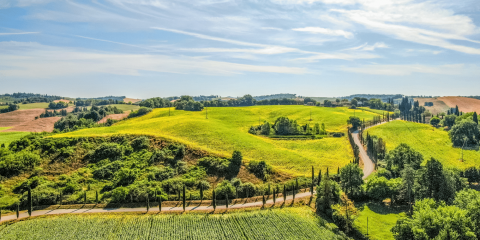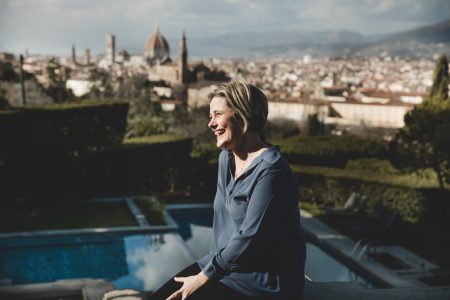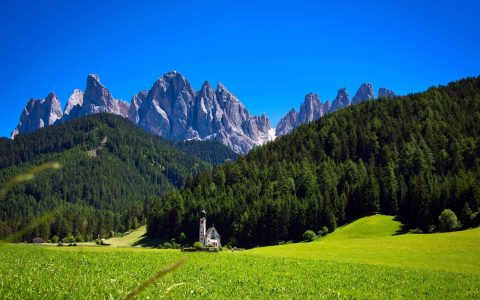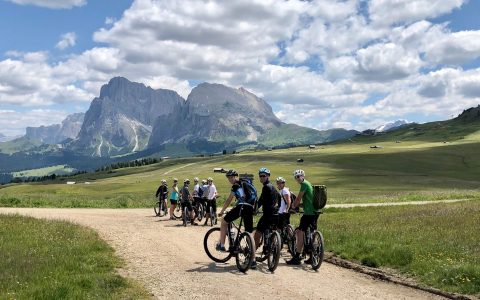In Deep: Puglia Off The Beaten Track
Even in our era of fast travel, Puglia is not easy to get to. A peninsula tacked onto the far end of another much larger one, it is nominally western Europe, but figuratively the “end of the road.” Lecce, its Baroque jewel of a city, is both east of Vienna and south of Barcelona. And as the crow flies, Leuca, at Puglia’s southern tip, is farther from Milan than is London. We’re talking waaay out there.

The point being, as a destination for cycling, Puglia is worth the jaunt, but once there, it makes good sense to explore beyond the Salento, the area where bike itineraries are concentrated. For Puglia offers a lot more to see and experience, and if you’ve come all this way, why not take it all in? Unlike more convenient places like, say, Provence or Costa Brava, there’s a good likelihood that you’ll never make it back to this corner of the world. Here are my favourites to supplement a wonderful week in the saddle with some independent exploration.
Castel del Monte

 Italy’s history is littered with famously influential personages, from Augustus to Dante to Leonardo da Vinci. One relatively unheralded name in this long list is Frederick II, a Holy Roman Emperor and crusader who was a Renaissance man, a full 250 years before the Renaissance actually took place. Linguist, naturalist, poet, and architect, one of Frederick’s legacies is the splendid Castel del Monte, situated high on a hill near the Pugliese town of Andria.
Italy’s history is littered with famously influential personages, from Augustus to Dante to Leonardo da Vinci. One relatively unheralded name in this long list is Frederick II, a Holy Roman Emperor and crusader who was a Renaissance man, a full 250 years before the Renaissance actually took place. Linguist, naturalist, poet, and architect, one of Frederick’s legacies is the splendid Castel del Monte, situated high on a hill near the Pugliese town of Andria.
So (relatively) small it was considered a mere hunting lodge rather than a residential palace, Castel del Monte is nonetheless huge in architectonic stature for its octagonal shape and eight corresponding towers – a monument so important to the Italian psyche, in fact, that it was chosen to adorn the one-cent coin at the inception of the euro. Frederick’s inspiration for the octagon is widely debated, but the result is unequivocally unique and striking, and well worth the detour to see it.
Trani

On the Adriatic coast halfway between Bari and Foggia, this may be Puglia’s quintessential seaside town. The sunrise sight of its glowing Romanesque cathedral, the Basilica of San Nicola Pellegrino, standing sentry over the small harbour, is one of the region’s most enduring images. While not rich in art or archeological history, Trani still makes for a memorable stop for lunch or an overnight on the drive from Puglia to Amalfi.
Uncover A Piece of Paradise
At the edge of the Italian peninsula, ride uninterrupted along the Adriatic coast and through olive groves and whitewashed villages on our Puglia Biking trip.
DETAILED ITINERARYThe Gargano

At Puglia’s northern end, jutting into the Adriatic to form the spur on Italy’s boot, is the Gargano Peninsula. For all intents and purposes a national park in its entirety, the Gargano ranks as one of Italy’s most ruggedly beautiful territories. Along its coastline, roads dip and dive along the tops of sheer white cliffs, with whitewashed villages and secluded beaches sprinkled in along the way; the imposing interior is virtually uninhabited, and a great place for true hikers. Top-quality accommodations are scarce, but for a feel of the “real” Italy, both culturally and topographically, the Gargano is abundant.
Matera

Not technically within the administrative boundaries of Puglia but rather the neighbouring region of Basilicata, Matera is deserving of at least a day to see “i sassi,” the local name for the caves that formed a troglodyte settlement thought to be one of the first-ever human communities on the Italian peninsula—and one that was inhabited well into the 20th century!

Declared a UNESCO Site in 1993, the sassi speak volumes both to the paleontological importance of the area and also to a backwardness so pronounced, that writer Carlo Levi declared it a place where modern civilization had not yet arrived in 1935. Times have now changed—the sassi are no longer occupied, and Matera is thriving—but the window into a not-that-long-ago primitivism is fascinating. Like smaller versions of Puglia itself in their remoteness, these places will require a car, good GPS, and some time; however, for those who will only visit here once, each will allow you to leave with a deeper understanding of the region beyond the biking.
MORE FROM Italy + Puglia

Take on a Challenge on the White Roads of Tuscany
Tuscany
Reading for the Road: Books About Florence
Tuscany
New Trip Spotlight: Venice to Verona Biking
Veneto
Cuisine 102: Tuscan Delicacies
Tuscany
New Trip Spotlight: Piemonte to Portofino Walking
Cinque Terre
How to Best Experience the Natural Wonders of Umbria
Umbria
Notes from the Road: A Research Trip in Sicily
Sicily
Umbria’s 3 Essential Cities
Umbria
Sustainable Cuisine in Northern Italy: In Conversation with Michelin-starred Chef Norbert Niederkofler
Dolomites
The Origin of the Negroni: Florence’s Favourite Cocktail
Tuscany
The 10 Best Restaurants in Florence
Tuscany
Giro-E: Racing the Giro d’Italia Route on E-bikes
Italy
The Best Villas in Italy: Amalfi, Tuscany and Umbria
Amalfi Coast
A Taste of Piemonte with Silvia Altare
Piemonte
Finding Prosperity in Food & Community in Rural Italy
Puglia
5 Unmissable Tuscan Hilltop Towns
Tuscany
The Most Incredible Hikes in Italy’s Dolomite Mountains
Dolomites
The Best Hotels in Rome for Every Taste
Rome
A Day in Florence: Rediscovering the City with Family Post-Lockdown
Tuscany

